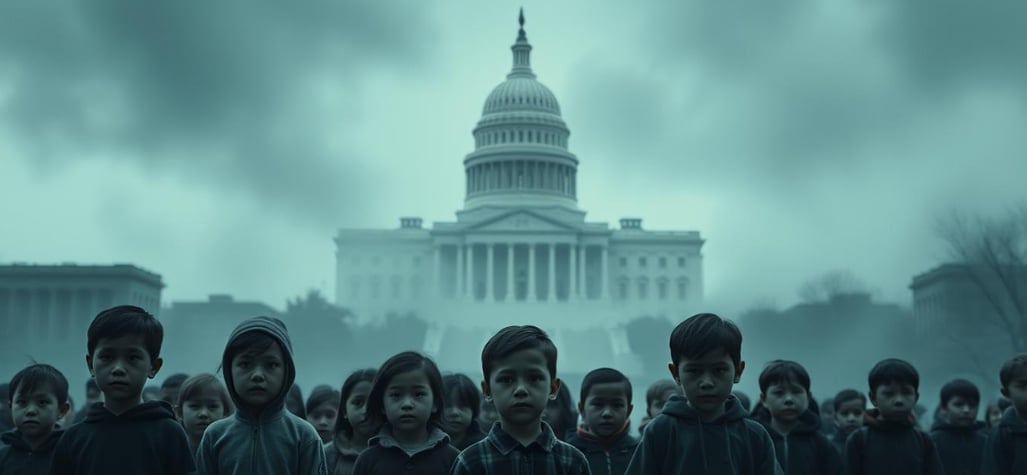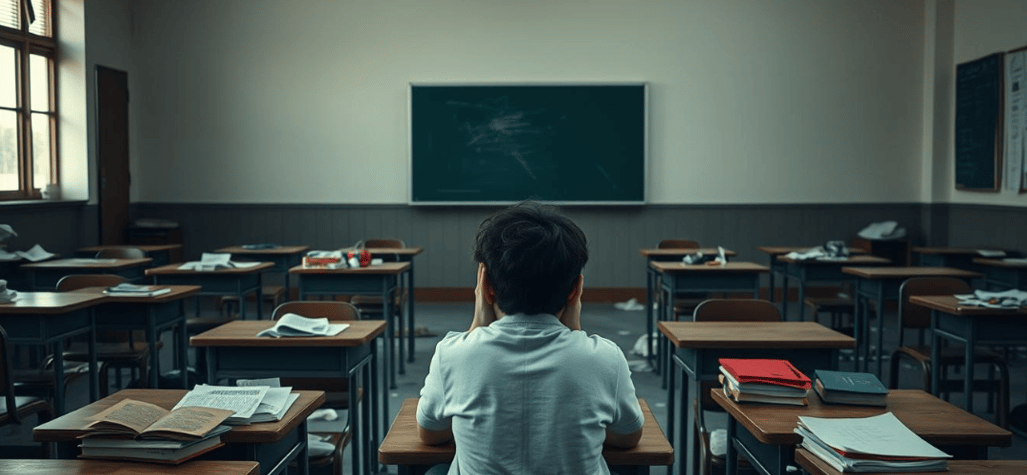
What Trump's Move to Shutter Education Dept. Means for Students
The idea of getting rid of the U.S. Department of Education has sparked a lot of debate. Donald Trump wants to close it, which has many people worried. They are concerned about how it will affect schools and students.
3/24/202510 min read

President Trump wants to close the U.S. Department of Education. This move has started a big debate. It makes people wonder how schools will be funded and what education will look like in the future.
Students, families, and teachers are worried. They don't know what will happen to special education funding and civil rights protections. This change could mean big shifts in how schools are supported.
The debate shows the tension between federal and state control over education. It's important to understand how these changes will affect classrooms and communities.
Key Takeaways
The proposal aims to end federal oversight but could shift responsibilities to states.
Student aid programs and school funding formulas may see major revisions.
Education equity concerns are central to discussions about the policy’s effects.
Teachers and policymakers will need to adapt to new governance structures.
This decision reflects broader debates over the role of government in education systems.
Understanding Trump's Proposal to Eliminate the Department of Education
President Trump wants to get rid of the U.S. Department of Education. He plans to give more power to states and local communities. This means ending federal control over programs like Title I funding and special education.
Supporters say this will cut down on bureaucracy. It will let states make education fit their needs better. But critics worry about fairness, as federal money helps poor and disabled students.


If it happens, the department's work will slowly disappear. Programs will move to other agencies or end. This plan fits with Republican ideas of less federal control in schools.
Some see it as a chance for schools to be more flexible. Others fear it could harm important programs like No Child Left Behind.
The debate is about whether local control is better or if it weakens national standards. The plan's timeline is still up in the air. But it shows the ongoing battle between federal control and state-led changes.
Historical Context: The Department of Education's Role in American Schooling
The Department of Education became a standalone federal agency in 1979 after decades of advocacy. Its mission was to improve the educational system evolution by setting standards and ensuring equity. It played a key role in shaping education policy, from funding programs to addressing school desegregation.
Early efforts included Title IX protections and special education rights under the 1975 Individuals with Disabilities Education Act.
Major turning points included the 2002 No Child Left Behind Act, which tied school funding to student test scores. The 2015 Every Student Succeeds Act shifted accountability back to states. These laws show the department's role in balancing federal oversight with local needs.
Critics say centralized education policy can overlook regional differences. Supporters argue it advances civil rights and resources for disadvantaged students.
Since its creation, the department has also tracked school data, provided disaster relief, and supported teacher training. Its influence spans K-12 and higher education, shaping everything from lunch programs to college affordability initiatives. Decades of educational system evolution under its watch now form the foundation of today’s debates.
Historical debates about federal authority in schools stretch back to the 1800s, but the 1979 decision marked a permanent federal commitment. Past attempts to eliminate the department, including in the 1990s, failed—highlighting its entrenched role. Understanding this legacy clarifies why its potential elimination sparks such heated discussions about equity, tradition, and the future of American schools.
What Trump's Move to Shutter Education Dept. Means for Students Across Different Grade Levels
K-12 students might see big changes in their school days. Programs like Title I funding and IDEA might move to state control. Standardized tests could change a lot, depending on the district.
Families might wait longer for help with civil rights issues. This is because federal oversight could slow down.
College students will see big changes in financial aid. Pell Grants and federal loans will need new ways to be managed. Work-study programs might get smaller if states don't match funds.
What Trump's move to shutter education dept. means for students in STEM or vocational training is unclear. Grant availability for these programs could drop.
“Without a federal watchdog, schools may prioritize state agendas over equity,” said Dr. Lena Torres, education policy analyst at the National Center for Education Statistics.
Younger students might see new curriculum changes. High school seniors could face confusion when applying to college. Every grade level will need to adjust, but how fast and fairly depends on state decisions.
Federal Funding Redistribution and Its Implications
Changes to federal education budgets could change impact on education across the U.S. Programs like Title I grants and special education funding need federal oversight. If the Department of Education is eliminated, these funds might go to block grants or other agencies. This could change how schools get important resources.
Every year, over $75 billion goes to schools through federal programs. Rural and urban districts count on this money for meals, special services, and technology. If control goes to states, local budgets might struggle, especially in areas with low taxes.
Education policy debates ask if states can handle these funds fairly without federal checks. This is a big concern.
“Block grants might simplify processes, but they risk cutting support for vulnerable students,” said a 2023 report by the Center on Budget and Policy Priorities. “States with tighter budgets may prioritize other needs over education.”
Grants for special education and Title I help low-income students get books, tutoring, and facilities. If funding changes, schools in poor areas might lose this help. For example, school lunch programs for 30 million kids depend on federal contracts. Any change could mean schools have to charge more or cut services.
Changes in education policy also raise questions about accountability. Without federal checks, states might not fund programs like IDEA for disabled students enough. Rural schools, already facing budget issues, could see even bigger cuts if states focus on other areas.
State-Level Educational Authority: A New Landscape
Shifting educational control to state governments could lead to big educational changes across the country. Each state has its own way of running schools, with different budgets and rules. With new government decisions, these differences might get even bigger.
For example, states like Massachusetts might grow their education programs. But others could struggle without federal help.
Funding could become more uneven. Richer states might spend more on schools, while poorer ones could see cuts. Expectations for math, reading, and science could vary widely.
Rural areas might change slower than cities. This could lead to different learning experiences.
States must balance innovation with equity. Without federal oversight, some communities risk falling behind.” – Education Policy Analysis Report, 2023
States like Vermont and California are already trying new things. They might lead in updating curricula. But states with less money could lag behind.
Special education, teacher training, and technology access will depend on each state's budget. This change could bring both opportunities and challenges.
While local needs might be better met, losing national standards could widen achievement gaps. Policymakers need to make sure government decisions help all students, even as power shifts.
Addressing Concerns About Educational Equality and Access
Removing the Department of Education raises questions about student welfare and impact on education fairness. Laws like Title IX and the Individuals with Disabilities Education Act (IDEA) ensure equal access. Without a federal body, states might not enforce anti-discrimination laws equally.
"Every student deserves fair opportunities to learn," states the Civil Rights Act of 1964, which underpins many education protections.
Special education services, as required by IDEA, need federal oversight. Over 7 million students with disabilities get help under this law. If states take over, services might not be consistent.
English learners and low-income families also count on federal support. About 40% of public school students get free or reduced lunches. This shows how important fair funding is.
Experts fear less federal oversight could make education gaps wider. States might focus on being efficient rather than fair. The issue is finding a balance between local control and national standards to protect all students.
Public School Systems vs. Private Education: Shifting Dynamics
The debate over dismantling the Department of Education raises questions about the future of public schooling and private alternatives. If federal oversight fades, educational changes could push families toward school choice programs like vouchers or charter schools. These shifts might spark competition, encouraging public schools to innovate to retain students.
“Every child deserves an education that works for them, and expanding options ensures families have real choices.” – Betsy DeVos, former U.S. Secretary of Education
Advocates argue competition could improve quality, while critics fear public schooling systems might lose resources. Private schools might see growth, but questions linger about accountability. How will states ensure all schools meet basic standards amid these educational changes?
Potential collaboration could emerge: public and private institutions sharing resources or teacher training. Yet, balancing choice with equity remains key. Without federal guidelines, disparities in funding and access could widen. Families in rural areas may struggle to navigate new options, raising concerns about who benefits most from these shifts.
As policies evolve, the focus stays on students. Will educational changes strengthen opportunities or deepen divides? The answer hinges on how communities adapt while upholding the promise of equitable learning for all.
Educational Reform Perspectives: Voices From All Sides
Educational reforms are a hot topic with strong opinions. Some say getting rid of the Department of Education would make things better. They believe local control would make education policy smoother. A Heritage Foundation report says, "States know their students best," pushing for less federal control.
But, others are worried. They think without federal help, some students might get left behind. A National Education Association spokesperson says, "Without federal safeguards, vulnerable students lose protections."
"Shifting power to states could boost innovation," argues a Cato Institute analyst. "But we must balance autonomy with equity," counters a UCLA education professor. These debates show how hard it is to change U.S. education policy.
Teachers’ unions say education policy affects what happens in classrooms. Rural schools rely on federal grants for special programs. On the other hand, some think tanks like the idea of less government. A Freedom Partners policy paper says, "Eliminating the department aligns with constitutional limits."
Experts want to talk things through. "The goal should be solutions, not just structure," says a bipartisan task force member. Everyone agrees that any changes must focus on helping students. Finding a balance will shape American education policy's future.
Preparing for Change: Guidance for Students, Parents, and Educators
As talks about the Department of Education’s possible closure go on, it's crucial for everyone to stay updated. For student welfare, start by looking at what resources you already have. Check out financial aid like FAFSA or state scholarships. Schools should also share news about programs that might change.
Parents, keep an eye on local board meetings for updates on student implications like what classes you'll take or how much money you'll get.
Teachers, review your school's budget and look for grants or partnerships to help with money issues. Learning about new standards or rules will also help everyone adjust. Students in rural or low-income areas, talk to your school counselor about other ways to learn, like vocational training or online classes.
“Proactive planning builds resilience,” says the National Education Association. “Stay engaged with your community to advocate for equitable solutions.”
To be ready for the future, families can look into different ways to learn. This could be through dual enrollment programs or community college. Schools might work with nonprofits to keep mental health services or tutoring available. Being open about changes and flexible in learning helps all students, even when things are uncertain.
Conclusion: The Future of American Education in a Changing Landscape
The future of America's schools is a big topic. People are talking about how much power the federal government should have. Ideas like giving more power to states are being discussed.
Everyone agrees that schools and colleges need to get better. But, the Department of Education's role is still up in the air. The main goal is to improve education for all.
Reforms will need to find a balance between local and national needs. Families, teachers, and leaders must work together. This way, every student can get a good education.
Changes in how money is spent and who makes decisions are important. But, they also make some people worry about fairness. The key is to make choices that help students, not just politics.
It's important to stay updated on education news and speak up for what's right. Whether it's attending meetings or voting, we all play a part. The future of education will depend on how well we work together.
FAQ
What would happen to federal financial aid programs if the Department of Education is eliminated?
If the Department of Education is shut down, programs like Pell Grants and federal student loans could be hit hard. These programs might go to state control or see funding cuts. This could make it harder for students to get money for college.
How will the elimination of the Department of Education impact civil rights protections for students?
The Department of Education is key in enforcing laws that protect students from discrimination. Without it, there's worry about who will protect these rights. This could lead to unfair treatment in schools, especially for minority groups.
What changes can K-12 students expect in terms of funding and support?
K-12 students might see changes in how money is given to schools. Programs for students who need extra help could be affected. This could change how students learn and get support in school.
How might states handle educational governance without federal oversight?
Without federal rules, states might do things differently in schools. Some states might do well, while others might struggle. This could lead to big differences in how schools are run across the country.
What are the potential implications for public versus private education?
The change could make public and private schools more different. There might be more choices for parents, but it could also be harder to know if schools are good. This could lead to questions about the quality of education.
How does this proposal relate to historical educational reforms in the U.S.?
Getting rid of the Department of Education could undo a lot of progress. Reforms like No Child Left Behind and the Every Student Succeeds Act have helped schools a lot. Losing these efforts could hurt education in the U.S.
What guidance can be provided to families navigating these potential changes?
Families should stay up to date on school policies. They should also know how changes might affect money for school and other resources. Talking to local schools and looking into other school options could help too.
How do different stakeholders view the elimination of the Department of Education?
People have very different opinions on this. Some think it's good for local control and less red tape. Others worry about fairness and student safety. Hearing from both sides can give a clearer picture of what's at stake.




Explore
Engaging tips for kids and tablet usage.
Learn
Play
123-456-7890
© 2024. All rights reserved.
